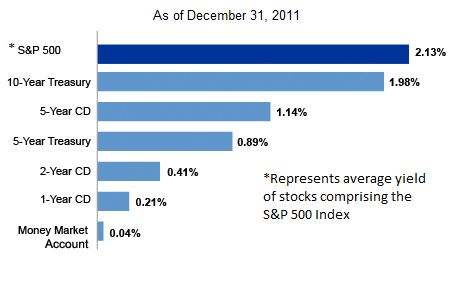Although the markets have been on a run of late, that doesn't mean we are anywhere near abandoning the income picks you've accumulated to transition into growth, says the team at Beyond Bulls & Bears.
Scarcity is one of the most fundamental concepts of economics. When something in demand grows increasingly scarce, obtaining it comes at an increasing cost.
Conservative investors have lately been facing a scarcity of yield amid a near-zero interest rate environment in the US, a situation that looks likely to continue into the foreseeable future. So what are the options for investors? Putting money in the bank? Parking it in US Treasuries?
Finding yield right now may be a difficult task, but Ed Jamieson, portfolio manager of Franklin Small-Mid Cap Growth Fund and CIO of Franklin Equity Group overseeing global growth, core, and hybrid strategies, and Bill Lippman, CIO of US Value for Franklin Equity Group and portfolio manager for several funds, including the Franklin Rising Dividends Fund, believe it’s not an impossible one.
There are always opportunities to capture yield...if you are willing to shoulder the price of the associated risk. In their words:
- We look at the return profile for a company historically, and we project that out three to five years.
- A low-interest rate environment generally benefits heavy borrowers, whose cost of borrowing will be kept low.
- We believe investors tired of little return may move out on the risk spectrum in search of more potential return.
- Dividends can indicate a company cares about its shareholders.
- Dividends look like they’re “here to stay.”
Since December 2008, the US Federal Reserve has held its key short-term interest rate near zero, and at its late January 2012 policy meeting, expressed no plans to change this dovish stance until at least through late 2014.
While a low-rate environment can help stimulate lending at the business and consumer levels, the flip side is that savers and investors have to balance the desire for potential return with the prospect of additional risk. Ed Jamieson’s thoughts on this low-rate conundrum:
“Winners are generally those who are heavy borrowers, whose cost of borrowing will be kept low. Losers are lenders and savers, such as retirees who live on interest and dividends, and banks and other companies who get a substantial amount of their income on float.Historically, lower interest rates have led to a weaker dollar, which makes our exports and domestically-produced products more competitive. It also boosts the value of foreign profits for multinational corporations. And, of course, capital costs for borrowers of US dollars drops when rates decline. So many non-financial corporations should find this policy favorable.
Looking at lower rates from another perspective, they should be good for equity markets, as investors are getting tired of getting so little return in the money market and Treasury bills. I think it seems likely they will end up moving out on the risk spectrum in search of more potential return, possibly into high-yield bonds and stocks.
In my view, the only un-crowded trade out there is really in stocks. I think, more recently, investors are willing to take on more risk (with stocks) in their search for potentially higher return.
Today as I see it, there seems to be an attractive trade-off between risk and return in the equity markets. And I think the strength in company fundamentals is beginning to command more mindshare and to loom larger, and investors like what they see.”
What About Dividend-Paying Equities?
Yield scarcity has also been driving investors to consider the option of dividend-paying equities.
In December 2011, the average dividend yield of stocks in the S&P 500 exceeded the yield on the ten-year Treasury note, which is not a common event. (See chart below for yield comparisons as of December 31.)
This chart is for illustrative purposes only, and does not reflect the performance of any Franklin, Templeton, or Mutual Series fund. Sales charges, fees and expenses are associated with Franklin Templeton fund investments, which reduce investment returns.
Treasuries, if held to maturity, offer a fixed rate of return and fixed principal value; their interest payments and principal are guaranteed. Fund investment return and share price will fluctuate with market conditions, and investors may have a gain or a loss when they sell their shares.
It’s important to note that CDs are insured by the Federal Deposit Insurance Corporation (FDIC) for up to $250,000 per owner, and offer a fixed rate of return.
Bill Lippman believes “dividends are here to stay.” Why are dividends important? In his opinion:
Paying dividends can tell us something about the company and its management. One, it says the company earns a profit consistently, so it can pay a dividend. Two, the company cares about its shareholders.Not all management does. We find some companies that, when we read the proxy before we get deeply into it, the management is in there to benefit itself, not its shareholders. That’s not for us. And if the company pays a dividend, to us it means it cares a little bit about the shareholders, it wants to give them something.
Three, it provides some consolation and some value in a really bad market. It’s nice to know if your stock is going down or your mutual fund is going down—it’s not a pleasure—but it’s nice to know that there is the possibility of some money coming through on a regular basis.”
We’ll leave you with a nugget from the late Sir John Templeton on choosing your investments. “People will tell you: Investigate before you invest. Listen to them. Study companies to learn what makes them successful.”
Read more from Beyond Bulls & Bears here...
Related Reading:



















